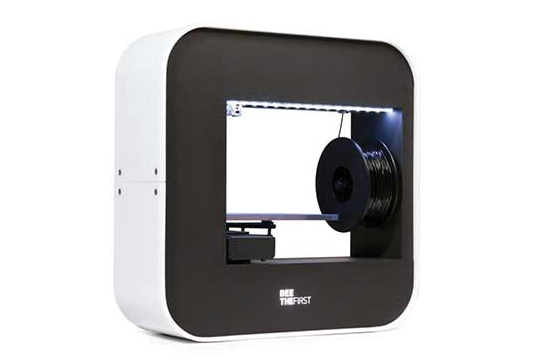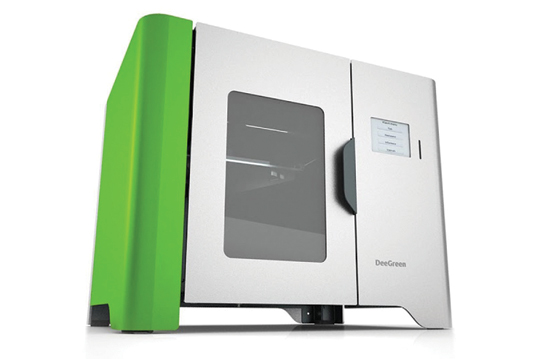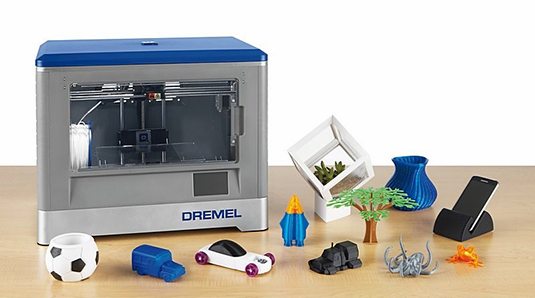Cheap 3D printers: the 8 best affordable 3D printers
Thinking of buying a 3D printer? We check out eight 3D printers and explain what they can do.

3D printers will soon be an essential appliance for every home, and will one day become as ubiquitous as microwaves. In the near future, if something gets lost or breaks, or you have an idea, you will just be able to print it in 3D.
Exciting times. But 3D printing isn't quite at that stage yet. So right now if you want to buy a 3D printer, you need to do a bit of research.
First up, you need to understand the different types of 3D printer and what they're used for.
Extruders vs SLA
Extruders are the most basic types of 3D printers; these are commonly used for hobbyist models and are designed for home use.
SLA printers are a little more advanced. These are for the serious hobbyist who wants more definition and smoother surface finishes in their end product. They're nearer to what you’d need for prototyping and small studio production, and they’re becoming more affordable.
If you are looking for a smooth surface the SLA (stereolithography rapid prototyping machine) is the way to go. Extruders always print with a bit of a rough surface.
Materials
Each printer can use a variety of materials so make sure to research what you are looking at making. Some printers can print in wood, plastic, metal, rubber, sugar, even chocolate.
Daily design news, reviews, how-tos and more, as picked by the editors.
When it comes to resolution keep in mind surface quality: the lower the micron, the better the print quality. Also, bear in mind that the lower the micron, the longer it will take to print.
01. BeetheFirst

The BeeTheFirst extruder looks like no other printer in this test. Designed to be easy-to-use, portable and eye-catching, this is potentially where the future of entry-level 3D printing is heading.
This printer is the perfect for the beginner. It’s sleek and streamlined and quite light in weight. Built from a solid plastic frame with metal parts it features an LED that runs over the top, illuminating the platform and logo.
However, with a 15.7x15.7x5.1-inch (HxWxD) frame, BeeTheFirst is very compact for a 3D printer. It’s 4.9x5.3x7.5-inch (HxWxD) build area is modest by 3D printer standards.
It performed extremely well. Everything was included; the software was very easy to understand. It doesn’t have many options, being more 'plug and play' so anyone could learn to use it, even children with parental guidance.
This machine would be great for home use and for hobbyists. If you’re after a smooth finish, however, this is not for you. Easy to use and looks great, the BeeTheFirst extruder is the perfect machine for beginners but lacks a smooth print.
02. DeeGreen

The DeeGreen extruder aims to make your first steps into 3D printing as easy as possible. For a start it works right out of the box and it’s one of the faster machines we tested.
Well-built and sturdy, this is an all-metal manufactured machine that feels great and reliable. It has a very attractive paint scheme and lighting effects, but avoids looking like a toy box machine.
Measuring 19.4x15.5x15.3 inches (HxWxD), the DeeGreen is larger that the BeeTheFirst printer, but it’s slightly more expensive too. The built-in touch-screen is a nice, user-friendly feature.
While it does work out of the box – and so avoids many setup headaches – if you want to go deeper the DeeGreen software has the options and depth to tweak the settings. It just takes a little more time to figure out the perfect settings for the results you are looking for.
This printer is set up for the serious hobbyist, and while it is user-friendly and able to be up and running quickly, to get the most from it you will need to invest time. It’s also one of the more expensive entry-level printers.
03. Olo

- Type: Extruder
 $99 (available soon)
$99 (available soon)- Material cost: $13.42/€9.90
To give beginners the chance to enjoy 3D printing, Olo have created an app and printer that let users create 3D objects directly from your smartphone.
Having made its debut in New York last year, Olo has gone on to rack up rave reviews all over the world. It's easy to see why Olo is winning over lots of fans as they've spent years perfecting their app and printer, resulting in a game-changing piece of technology.
To use Olo, simply load up the design you want to print, pop the building chamber over your smartphone screen, and pour in Olo's photopolymer resin. By using the light from the screen of the smartphone, models are built up and hardened layer by layer.
Designs can be chosen directly from Olo's app, or you can import your own by using any 3D scanning software. With a range of resins made from different materials, users can create strong or flexible models in various colours. Head over to Olo's Kickstarter page to see how you can get involved with this project.
04. Dremel Idea Builder

Whether you are a keen hobbyist, creative crafter or DIY enthusiast, Dremel wants you to turn your dreams into little detailed plastic things with its Idea Builder.
The Dremel 3D Idea Builder is a first foray into 3D printing for multi-tool specialist Dremel, and the company hopes that its expertise in the precision tool market will mean the Idea Printer could genuinely become a fixture in family homes around the world.
Dremel has focused on ensuring its 3D printer isn't intimidating, with simple instructions and a straightforward set-up, full support and video tutorials also available on the Dremel's Idea Builder site, so you can be printing within minutes.
Next page: four more affordable 3D printers
Jason Wires is the owner of Jason Wires Productions, a prototyping studio that prints molds and casts, that are then painted for the toy, video game, TV and film industries. The company uses 3D printers to a professional, industry standard.
